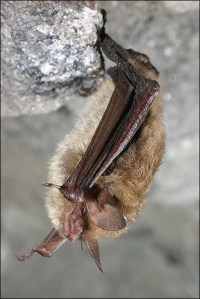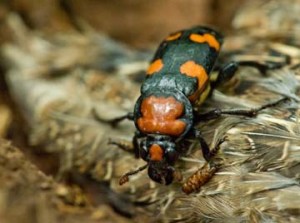This article is the second in a series following the ongoing work of the New York Natural Heritage Program (NYNHP) on Plum Island.
The NYNHP has embarked on a first-ever, comprehensive survey of the flora and fauna of Plum Island, as well as the marine life surrounding the island. I was anxious to report on the discoveries made by the scientific team over this past spring and summer, but the NYNHP is bound by a non-disclosure agreement with the Department of Homeland Security, the federal agency that operates the island and the Plum Island Animal Disease Center. We will need to wait patiently until sometime in 2016 to learn of the findings of the study when the final report is written. Until then, I will report on the wildlife species the scientific team is searching for, along with the methods they employ.

In my first interview with Matt Schlesinger, Chief Zoologist of the NYNHP, he explained that he was really excited to explore Plum Island “because it is not often that you get to explore a place that has not been thoroughly studied before, and where there is so much potential to find undiscovered rare species.” So, with much anticipation, as the early spring days of 2015 were warming, the scientific team arrived on Plum Island on March 18th to attend their orientation session arranged by the Department of Homeland Security. Ice still covered the freshwater lake and vernal pools on the island.
“One of our first undertakings was to look for mammal tracks in the remaining snow, as well as to collect samples of animal scat,” said Matt Schlesinger. “One mammal that might be living on Plum Island is the New England Cottontail, a Species of Special Concern.” The New England Cottontail has been teetering on the edge of being listed as an endangered species over the past decade due to the loss of scrub-shrub habitats, a community type that is plentiful on Plum Island.
“We also looked for hibernating bats in the old ammunition bunkers and tunnels beneath the artillery batteries of Fort Terry,” reported Matt, with a rising tone of exhilaration in his voice. Fort Terry was built in 1897 on Plum Island in preparation for the Spanish American war.

Imagine yourself as a scientist on the team, and being the first to explore the network of tunnels underneath Plum Island. Pointing your flashlight at the pitch black ceilings of the catacombs, and hoping to shed light on suspended bats still in hibernation — the experience had to be extremely exciting. “It is possible that certain bats like the Northern long-eared bat, whose population has dramatically declined in New England due to white-nose syndrome (a disease resulting from a type of fungus that is decimating bat populations) might be living in the tunnels, possibly protected from the disease that is prevalent on the mainland”, explained Schlesinger.
In late March, as the earth awakes into spring, is the time for certain frogs and salamanders to emerge from their winter slumber and move to vernal pools (short-lived and shallow pools of freshwater) to reproduce. A sure sign of spring is the loud, duck-like quacking of wood frogs in vernal pools. Interestingly, vernal pools exist on Plum Island, but previous studies concluded that there were no amphibians typically associated with vernal pools on the island. “The lack of frogs and salamanders was intriguing,” explained Schlesinger, “so we set up acoustic listening devices to identify frog calls, and we are now analyzing the hours of recorded data we collected.”

American burying beetles are unique creatures who sustain themselves by eating carrion, the scientific word for dead animal carcasses. American burying beetles are believed to have been extirpated in the state of New York, but Schlesinger believes that there is a chance they could still exist on Plum Island. “On islands like Plum, which are isolated from the mainland, there are typically fewer animals competing for the same carrion,” said Schlesinger. “This may give the burying beetle an advantage and an opportunity to survive.” He then detailed how the team set “pitfall” traps in the ground, baited with nasty smelling sardines, at different spots around Plum Island to attract and capture burying beetles, as well as other insects.

In the middle of Plum Island lies a large, 96-acre, freshwater wetlands complex, fed by an aquifer. Up until now very little has been known about the wildlife in this area. Part of the complex is a deep-water lake, while another area is a bog, home to high-bush blueberries. In past field studies, a group of tree stumps were found. These were identified to be a once-thriving Atlantic White Cedar community, a threatened habitat type in New York. In mid-June the New York Department of Environmental Conservation sent scientists to explore what fish and other aquatic species reside in the freshwater lake and wetlands. Trapping methods included the use of fyke nets (funnel traps) and minnow traps. Erin White, Kelly Perkins, and Matt of the NYNHP used turtle traps to allure and potentially capture various species for identification. Might an endangered bog turtle or mud turtle be found on Plum Island? We shall wait and see…
Stay tuned to Part 3 of the series, which will include updates on the scientific team’s search for night birds, moths and dragonflies, and marine life around Plum Island. In the meantime, please visit www.preserveplumisland.org for more information. To get updates on what you can do to save this spectacular island, which is threatened to be sold to the highest bidder, please sign up for Plum Island Alerts.
Posted by Chris Cryder, special projects coordinator at CFE/Save the Sound.
